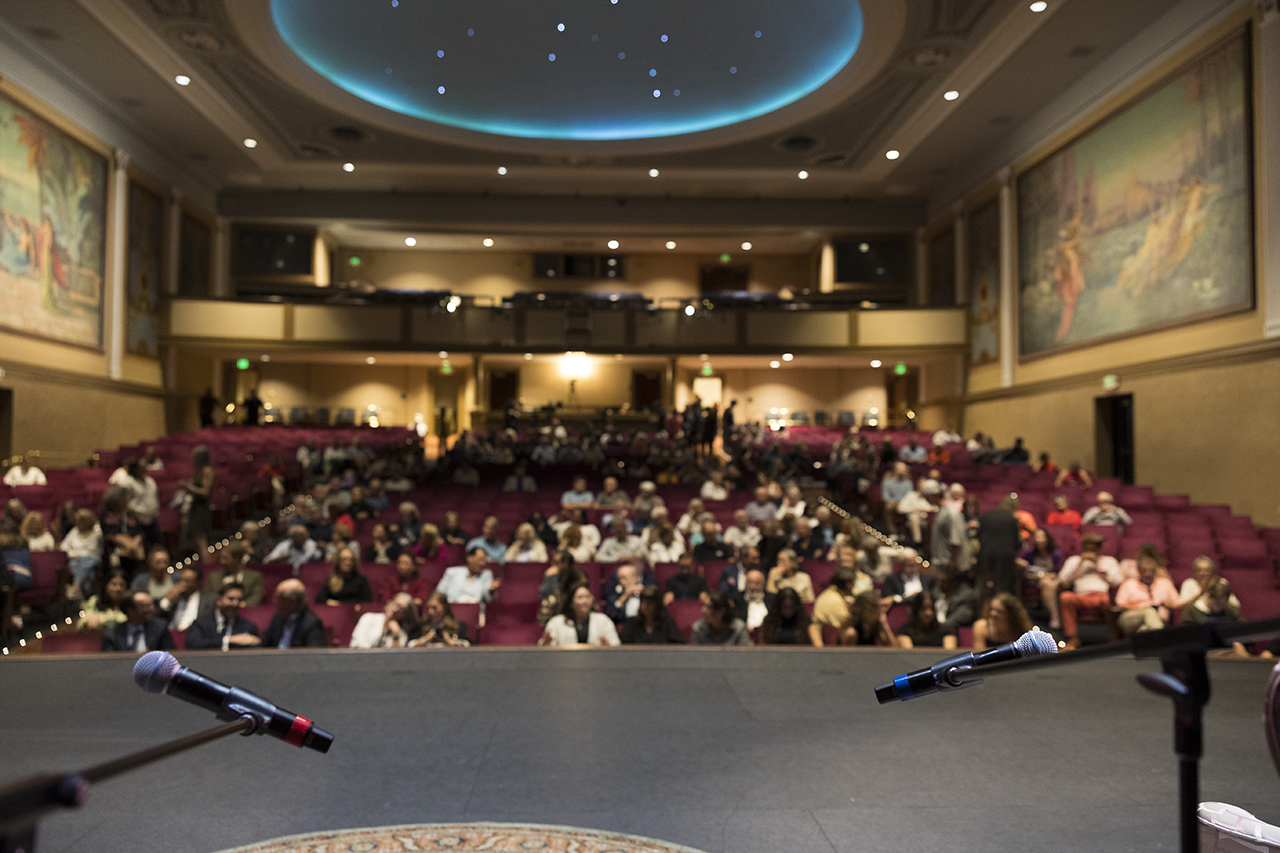The 'Jurassic' Evolution: Artistic Craftsmanship Far From Extinct in the Digital Age
Computing in the Arts faculty member Anurag Tiwari explores the use of digital animation and visual effects in the "Jurassic" movies, showing that human creativity isn't going the way of the dinosaur any time soon.
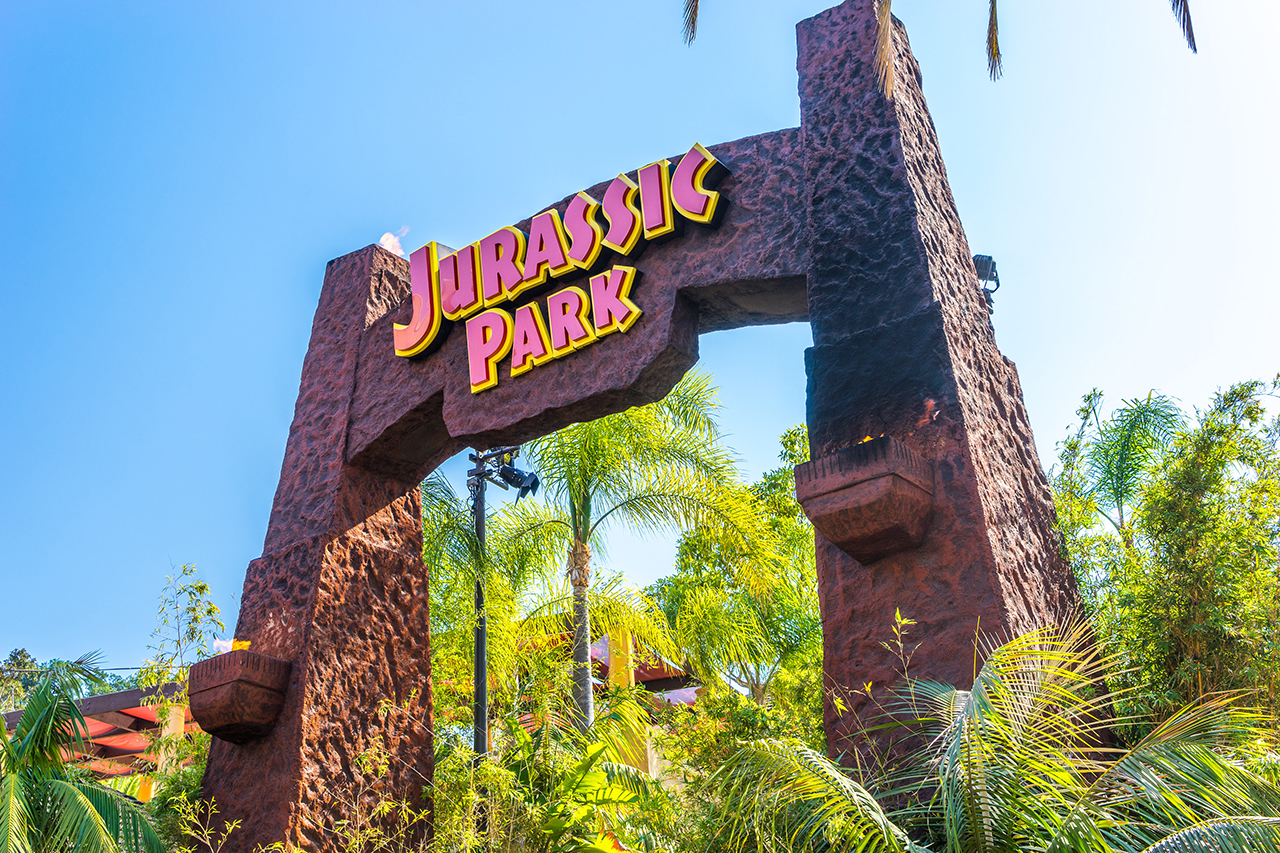
One of the most anticipated movies of the summer, Jurassic World: Rebirth marks the seventh film in the Jurassic series since Jurassic Park came along in 1993 and revolutionized visual effects in the industry. The film’s hybrid approach of blending large-scale animatronics and nascent computer-generated imagery (CGI) was groundbreaking, setting a new bar for digital animation.
The past 32 years, of course, have seen many advances in CGI and other tools for visual effects. To learn more about the evolution of digital animation over the years, and what we can expect not just from Jurassic World: Rebirth, but in the future of filmmaking, The College Today turned to Anurag Tiwari, a computer science instructor in the College of Charleston Computing in the Arts program whose background is in computer vision, AI and digital animation.
Tiwari took the time to review the six previous movies in the series, and provides insight into the technical evolution of the Jurassic world, highlighting why – even in an age of artificial intelligence – realism still relies on human creativity, time and craft.
How did the dinosaurs in Jurassic Park break new ground?
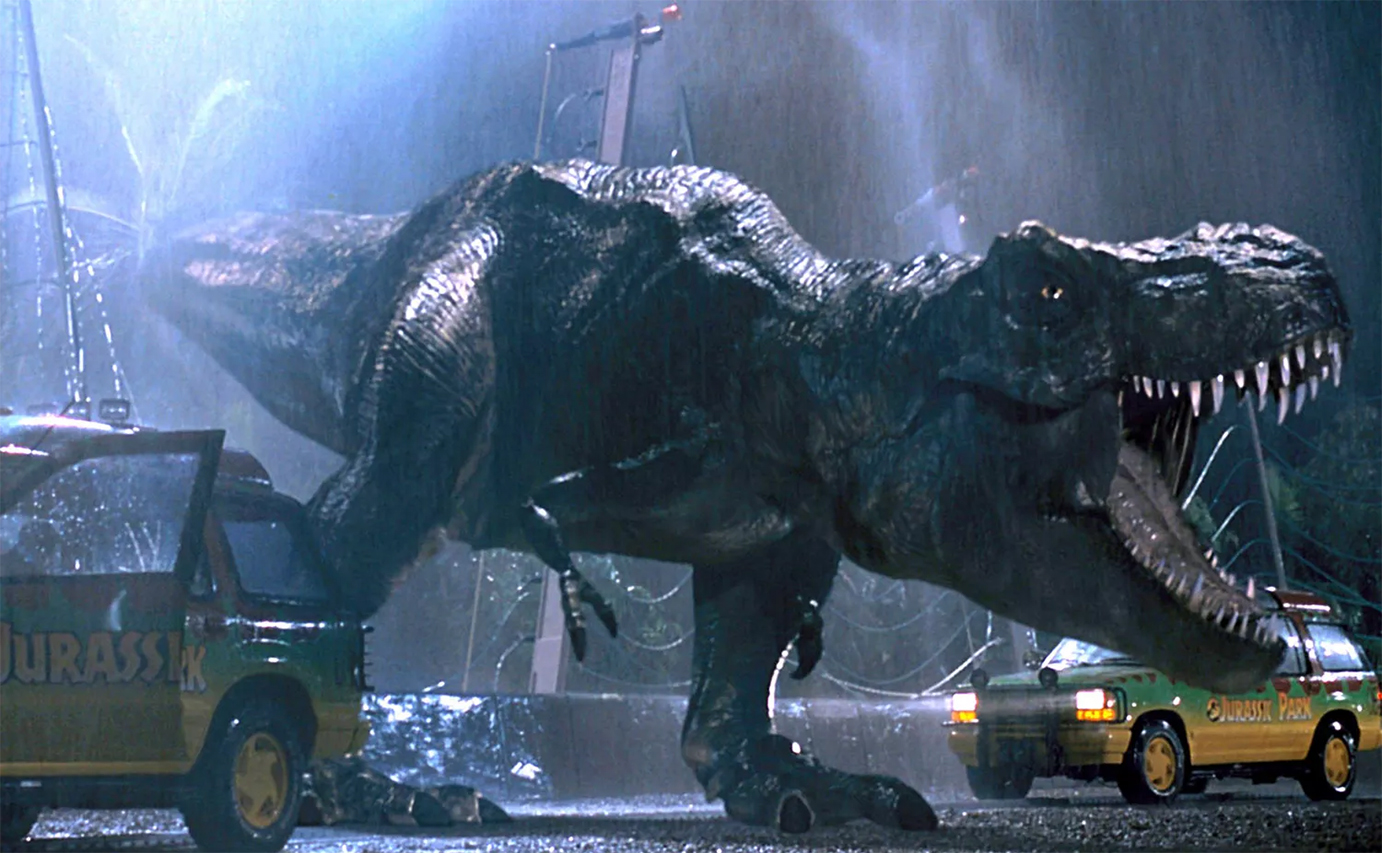
The original Jurassic Park is the benchmark, revolutionizing visual effects with both animatronics and CGI. Born from necessity and artistic vision, the hybrid approach created a sense of realism that grounded the fantasy and continues to impress audiences decades later.
Because early CGI had significant limitations, Stan Winston Studio’s animatronics provided unparalleled physical presence for close-ups and actor interaction, giving the creatures a palpable weight and realism. These were not just puppets, but complex hydraulic machines.
The massive T. rex, for example, weighed 4.5 tons and was controlled by 57 hydraulic functions and a flight simulator-based motion platform, which allowed for gross movements and subtle details like radio-controlled eyes. These physical models were essential. They served as real-world lighting and motion references for the CGI counterparts and helped anchor the digital visuals. However, animatronics were costly, complex and prone to physical issues, such as the T. rex’s foam skin absorbing water and violently shaking in rain scenes.
For shots that were impossible to achieve with animatronics – like the full-body running shots of the Gallimimus herd – Industrial Light & Magic (ILM) stepped in with early CGI. ILM developed a groundbreaking innovation: the Dinosaur Input Device (DID), a physical rig with digital sensors that let stop-motion animators apply their skills in the digital realm. This bridged the gap between traditional craft knowledge of realistic animal movement and emerging tech, demonstrating that human artistry was crucial, even in digital animation.
Director Steven Spielberg and ILM also used clever tricks to mask early CGI’s shortcomings, such as long render times and lighting challenges, by staging scenes in darkness or rain, or using fast motion to obscure flaws. These constraints ultimately inspired creative choices that made the visuals more believable than later, all-digital approaches.
Also, I cannot overstate the importance of lighting; the original film’s success in realism was partly due to setting scenes in low light or rain, which helped conceal the shiny look of early CGI and reduce rendering challenges. The physical animatronics helped artists simulate how real light and shadow interacted with the creatures, making the digital models more lifelike.
How did the dinosaurs in the following films adapt as technology evolved over the years?
As technology advanced, CGI and motion capture (mocap) became more prevalent, particularly in the Jurassic World series. Mocap allowed for rapid animation and real-time performance capture on set, speeding up the production pipeline.
But humans don’t move like dinosaurs, so performances had to be heavily refined by the animators to avoid an uncanny, unnatural feel. For the raptors, for example, human actors performed on set, and their movements were mapped onto digital models. For larger creatures like the T. rex, mocap data had to be significantly slowed to convey appropriate weight – otherwise, the dinosaurs seemed to move too lightly and lost their imposing presence.
The shift from the meticulous, hand-crafted keyframe animation of Jurassic Park to faster mocap led to fan and critic debate about the films’ visual realism. This highlights the “uncanny valley” effect, when mocap is used without sufficient artistic intervention for non-human anatomies.
The “uncanny valley” describes the discomfort people feel when artificial characters – like robots or CGI figures – appear almost human, but not quite.
That near-human quality creates a dip in emotional connection and believability.
The chart below visualizes a hypothetical “perceived realism” score for each film based on my analysis, suggesting newer technology doesn’t always equal better visuals.
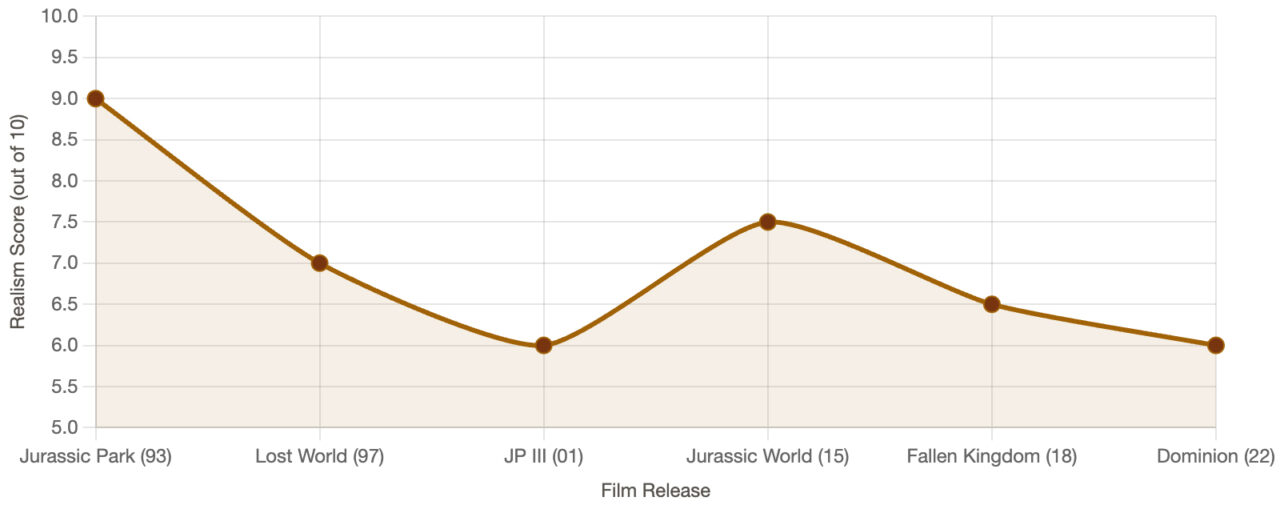
The increased reliance on CGI, with animators having less time per shot (weeks compared to months for the original), also contributed to a perceived lack of polish and realism in the newer films. The original Jurassic Park was a year and a half late because of post-production. My guess is they concentrated making it look nice – they came up with the dinosaur input device, or DID, and they had very, very precise hydraulic control over animatronics.
So, while modern technology allows for faster production, the meticulous craftsmanship of the original film remains unmatched.
What can we learn from the past, and what does the future of visual effects look like?
The future of creature effects may lie in a return to a hybrid philosophy, enhanced by new technologies.
The upcoming live-action remake of How to Train Your Dragon, for example, is taking cues from the original Jurassic Park by using physical puppets for actor interaction. The production created digital sculpts that were then built as physical puppets, giving actors real interaction points. The Toothless dragon, for instance, features multiple heads – some designed for nuanced acting, others for action – each operated by a team of five puppeteers. The emphasis on practical puppetry and physical interaction, combined with CGI, creates more tactile and authentic dragons, grounded in real animal references like crocodiles, tropical birds and black panthers. This gives a higher level of realism – a direct lesson from the success of Jurassic Park‘s methodology.
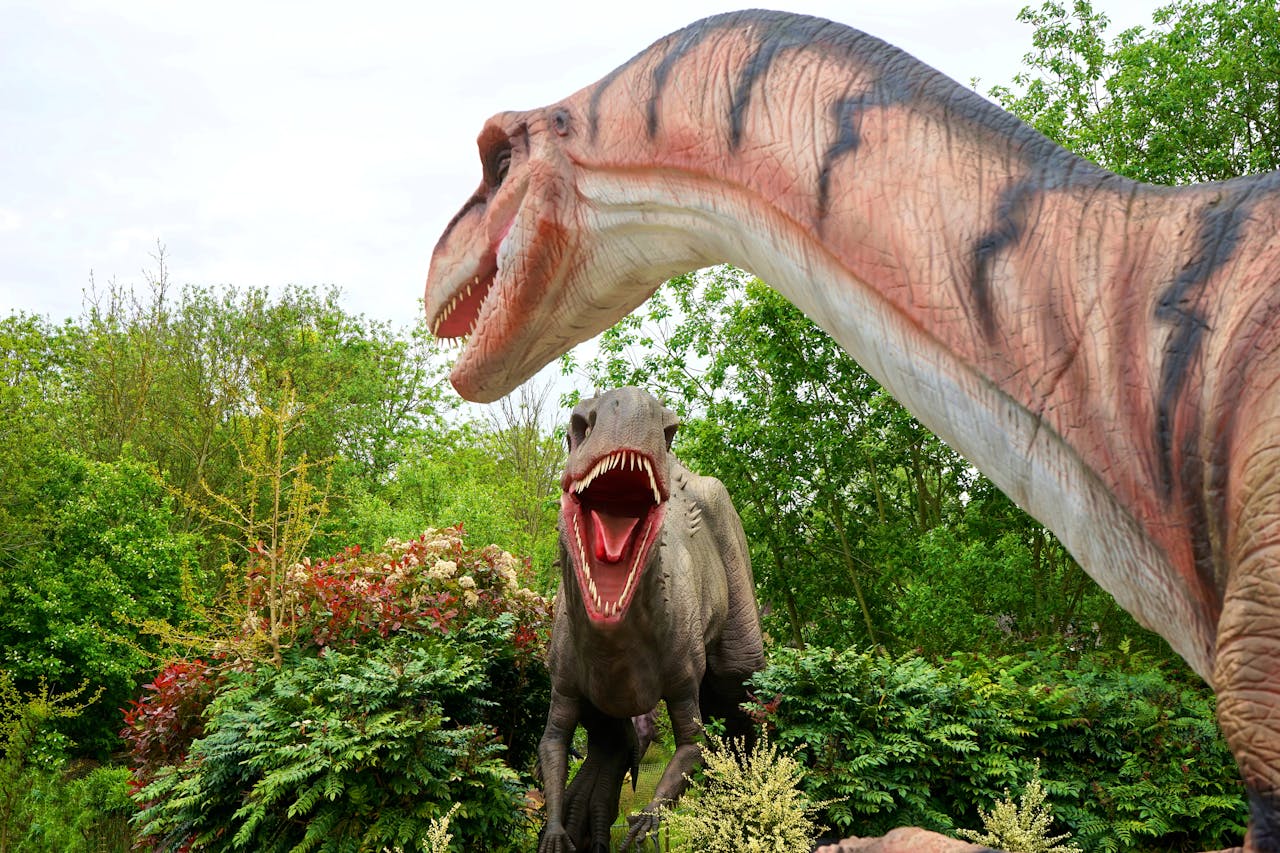
This, combined with the potential of artificial intelligence, points to an exciting future where technology enhances, rather than replaces, artistic realism.
AI tools like Stable Diffusion, for example, may further revolutionize animation and visual effects, in areas like lighting and scene composition. Stable Diffusion can create high-quality concept art, textures and even entire scenes from text prompts – essentially acting like ChatGPT, but instead of replying in text, the engine is replying in images.
As I mentioned, the most difficult and time-consuming part about animation is making sure the lighting in every frame of the motion capture being converted to animation is consistent and actually sits with the scene properly. Otherwise, it goes into that uncanny valley where you start to recognize something is wrong; human eyes are amazing at recognizing that lighting is off. But, with tools like Stable Diffusion, you don’t have to worry about all of that because the lighting, the framing, the setting of the scene is all automated.
Painstaking work will always beat out AI tool, though. So, I think AI will help by streamlining tedious tasks, composing full scenes and generating realistic atmospheric effects and object placement. And this allows artists to concentrate on fine-tuning and storytelling. They can spend more time on integrating practical and digital effects like the original Jurassic Park did.
The diagram below illustrates how AI can act as a bridge, synergizing the best of physical and digital techniques to achieve a new level of realism.

The Jurassic franchise’s evolution underscores that, while digital tools offer boundless creative possibilities, true realism often stems from a thoughtful blend of techniques and a deep understanding of animation fundamentals. For developers, this means recognizing that cutting-edge technology is a tool, not a solution in and of itself.
The ultimate goal is not just to create a creature, but to make the audience believe it’s truly there – and the enduring magic of Jurassic Park proves that, when you combine traditional craftsmanship with thoughtful innovation, the results can be truly timeless.


